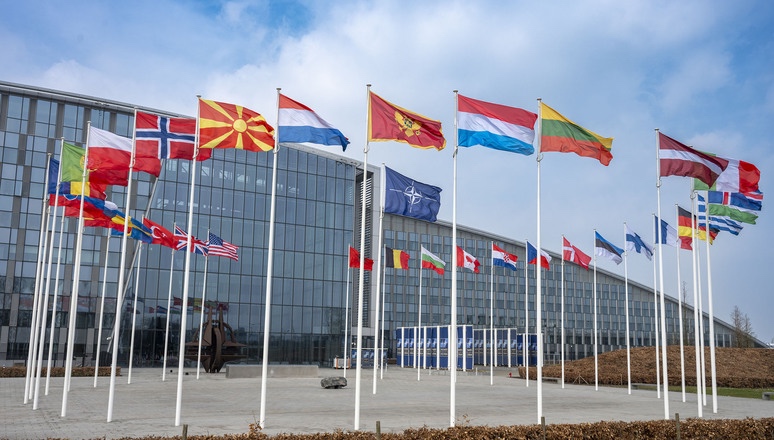


It has become the polite euphemism of the age: a term that sounds solid, perhaps even reassuring, but whose substance is stubbornly elusive. With NATO membership for Ukraine firmly off the table in the near term, the hunt for something—anything—that can be dressed up as credible reassurance has become the focal point of Western diplomacy.
Yet the difficulty is precisely this: without ironclad protection, any deal struck with Moscow risks becoming nothing more than a pause before the next assault. The experience of 2014, when Crimea was seized under the nose of the so-called international order, hangs heavily in Kyiv’s mind. President Volodymyr Zelenskyy’s government knows too well that vague pledges and declaratory statements will not stop Russian tanks if the ceasefire collapses.
European leaders, themselves led in recent months by Britain’s Prime Minister Sir Keir Starmer and France’s Emmanuel Macron, have floated the idea of a “coalition of the willing.” On paper, this sounds bold: a grouping of nations prepared to act where the alliance as a whole will not. But the vagueness of the concept betrays its fragility. Who would actually commit troops? Who would take political responsibility for escalation should Russia test the resolve of such a force?
Downing Street has hinted at “mature operational plans” for a reassurance deployment in Ukraine if and when a ceasefire is reached. The stated mission would be to “secure Ukraine’s skies and seas and regenerate Ukraine’s armed forces.” Again, though, the details are murky. Does this mean Patriot missile batteries manned by British or French crews on Ukrainian soil? A naval presence in the Black Sea? Joint training missions that blend into combat support? The language is diplomatic smoke rather than military steel.
Ukrainian officials are acutely aware of the gap between Western rhetoric and practical reality. Opposition MP Mariya Ionova put it bluntly in a recent BBC interview: “The main security guarantee and only true one is NATO membership.” Anything else is, in essence, a halfway house—better than nothing, but far short of what Kyiv wants or needs.
Ionova’s insistence on “close coordination between the US, Ukraine and Europe” reflects the central problem. Unless Washington is on board, European promises lack both the scale and credibility to deter Moscow. And yet, President Donald Trump’s equivocal stance towards Russia has deepened uncertainty. Trump’s musings about re-examining the status of Crimea and his reluctance to bind the United States to fresh security commitments have left Europeans scrambling to design a framework that is, at once, credible enough for Kyiv yet vague enough to avoid enraging the White House.
What makes the debate so striking is that Ukraine itself is paying the price of Western hesitation. As Ionova noted, “Russians are moving forward and they have all the capacities.” Ukrainian forces continue to fight desperately, absorbing losses and expending dwindling ammunition supplies while European leaders craft theoretical guarantees for a hypothetical ceasefire that may never materialise.
This is the great paradox. It is Ukraine—not Paris, Berlin, or London—that is striving for peace most urgently. Yet it is Kyiv that is asked to swallow the bitterest compromises: to accept that NATO membership is unattainable, to trust in paper pledges rather than Article 5. The result is a diplomatic theatre in which those doing the dying must settle for language designed by those doing the talking.
The West has, of course, been here before. The Budapest Memorandum of 1994 provided “assurances” to Ukraine in exchange for surrendering its nuclear arsenal. When Russia violated those assurances by annexing Crimea in 2014, the response was sanctions and condemnations—but no military action. To repeat such a mistake in 2025 would be to invite further aggression.
Security guarantees, if they are to mean anything, must carry the prospect of force. That means binding commitments, deployment of assets, and political will to follow through even when it is costly. Otherwise, Moscow will rightly interpret Western words as little more than tactical camouflage.
For Britain, France and Germany, the stakes are therefore higher than simply “managing” the Ukraine war. Europe’s credibility as a strategic actor is on the line. If the continent cannot guarantee the sovereignty of a nation it has championed for more than three years, then what hope is there for its grand talk of “strategic autonomy” or a more muscular European defence posture?
For the United States, the stakes are different but no less significant. Trump may hope to cajole Russia into a ceasefire by dangling the prospect of sanctions relief. Yet if that ceasefire rests on flimsy security guarantees, Washington will be accused—rightly—of setting the stage for the next war.
The language of “security guarantees” is politically convenient. It allows leaders to sound resolute while avoiding the divisive debate over NATO membership. But Ukraine has every reason to be sceptical. Without concrete deployments, binding commitments, and above all the inclusion of Washington in the framework, such guarantees risk being yet another exercise in Western self-deception.
For all the communiqués and carefully chosen words, the fundamental truth remains: only hard power can keep Russian aggression at bay. Anything less leaves Ukraine, and Europe itself, exposed.